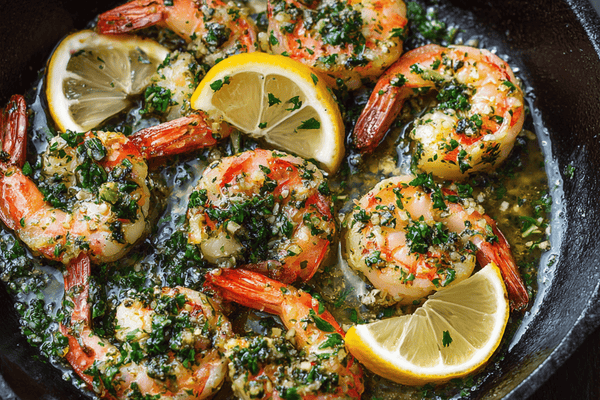
The world of food is rich with variety, and foods that start with the letter "B" are no exception. From fruits and vegetables to meats and grains, these foods offer diverse flavors, textures, and nutritional benefits. Let's explore some popular and interesting foods that begin with "B."
Bananas

Bananas are one of the most popular fruits worldwide. They are known for their sweet taste and creamy texture. Rich in potassium, fiber, and vitamins B6 and C, bananas are great for boosting energy and supporting heart health. They are versatile in culinary uses, being eaten raw, blended into smoothies, or baked into desserts like banana bread.
Blueberries
Blueberries are small, sweet, and slightly tart berries that are packed with antioxidants, particularly vitamin C and manganese. They are often eaten fresh, added to cereals and yogurt, or used in baking recipes such as muffins and pies. Blueberries are known for their potential benefits in improving brain health and reducing the risk of heart disease.
Broccoli

Broccoli is a green vegetable that belongs to the cruciferous family, known for its numerous health benefits. It is high in vitamins C, K, and A, as well as fiber and folate. Broccoli can be steamed, roasted, or added to soups and salads. It is recognized for its cancer-fighting properties and its role in improving digestive health.
Beef
Beef is a widely consumed meat that comes from cattle. It is a rich source of high-quality protein, iron, zinc, and B vitamins. Beef can be prepared in various ways, including grilling, roasting, and stewing. Different cuts of beef, such as steak, ribs, and ground beef, are used in a multitude of dishes worldwide.
Beans
Beans, including varieties like black beans, kidney beans, and pinto beans, are a staple in many diets. They are an excellent source of plant-based protein, fiber, iron, and folate. Beans are versatile and can be used in soups, stews, salads, and as side dishes. They are beneficial for heart health, weight management, and blood sugar regulation.
Beets

Beets are root vegetables known for their deep red color and earthy flavor. They are rich in fiber, folate, manganese, and nitrates. Beets can be roasted, boiled, pickled, or used in salads and juices. They are celebrated for their ability to improve blood flow and lower blood pressure.
Bell Peppers
Bell peppers, available in green, red, yellow, and orange varieties, are crisp and sweet vegetables. They are high in vitamins A and C, as well as antioxidants like beta-carotene. Bell peppers can be eaten raw, roasted, grilled, or stuffed. They add color and nutrition to a variety of dishes, from salads to stir-fries.
Bread

Bread is a staple food made from flour, water, and yeast or other leavening agents. It comes in many forms, including white, whole wheat, sourdough, and rye. Bread provides carbohydrates for energy, and whole grain varieties also offer fiber and essential nutrients. It is used in countless culinary applications, from sandwiches to toast to bread pudding.
Brown Rice
Brown rice is a whole grain rice with its outer hull removed, retaining the bran and germ layers. It is more nutritious than white rice, offering more fiber, vitamins, and minerals. Brown rice has a chewy texture and nutty flavor, and it can be used as a base for many dishes, including stir-fries, rice bowls, and salads.
Brussels Sprouts
Brussels sprouts are small, green, leafy vegetables that resemble miniature cabbages. They are high in vitamins C and K, fiber, and antioxidants. Brussels sprouts can be roasted, steamed, or sautéed, often served as a side dish or added to salads. They are known for their potential cancer-fighting properties and their role in supporting bone health.
Butternut Squash
Butternut squash is a type of winter squash with a sweet, nutty flavor. It is rich in vitamins A and C, fiber, and potassium. Butternut squash can be roasted, pureed into soups, or used in casseroles and salads. It is celebrated for its versatility and its benefits for eye health and immune function.
Blackberries

Blackberries are juicy, dark purple berries that are both sweet and tart. They are high in fiber, vitamins C and K, and antioxidants. Blackberries can be eaten fresh, added to cereals and desserts, or used in jams and sauces. They are known for their anti-inflammatory properties and their role in promoting heart health.
Basil
Basil is a fragrant herb commonly used in cooking, particularly in Italian cuisine. It is rich in vitamins A, K, and C, as well as essential oils that provide its distinctive aroma. Basil is often used fresh in salads, pastas, and sauces, like the famous pesto. It has antioxidant properties and can aid in digestion and inflammation reduction.
Barley
Barley is a whole grain that is high in fiber, vitamins, and minerals. It has a chewy texture and nutty flavor, and can be used in soups, stews, salads, and as a side dish. Barley is beneficial for heart health, helps regulate blood sugar levels, and supports digestive health.
Bok Choy

Bok choy, also known as Chinese cabbage, is a leafy green vegetable that is popular in Asian cuisine. It is rich in vitamins A, C, and K, as well as calcium and antioxidants. Bok choy can be stir-fried, steamed, or added to soups. It is known for its role in supporting bone health and boosting the immune system.
Foods that start with the letter "B" encompass a wide range of flavors, textures, and nutritional profiles. Incorporating these diverse ingredients into your diet can enhance your culinary experiences and contribute to a balanced and healthy lifestyle.


